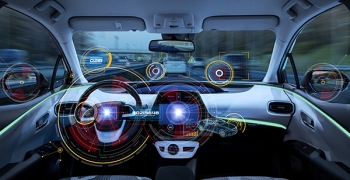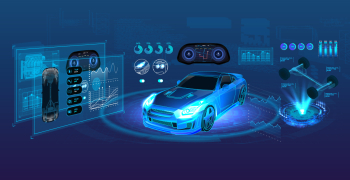Toward Safer and Smarter Automotives: Unlocking ASPICE, Functional Safety, and Cybersecurity
The global automotive industry is at an inflection point. As software-defined vehicles (SDVs), growing connectivity, and trends toward advanced autonomy reshape the future, we are witnessing a rise in both innovation and complexity.
To ensure the continued safety, security, and quality of the upcoming, next-gen vehicles, the focus, therefore, is increasingly on the enhanced integration of Automotive SPICE (ASPICE), functional safety, and cybersecurity. This integrated approach is helping drive a renewed confidence for modern automotive systems as both safe by design and secure by default.
The Purpose of Integration
The purpose of aligning ASPICE, functional safety, and cybersecurity lies in the evolving needs of modern vehicles. With software and connectivity becoming central to a vehicles’ operations, ensuring system integrity is critical. Integration not only simplifies complex workflows but also facilitates a unified approach toward addressing potential safety hazards and security vulnerabilities and enables unmatched quality assurance. The resultant holistic methodology enables global automotive manufacturers, OEMs, and Tier1s to deliver vehicles that excel in performance while meeting stringent regulatory requirements.
By combining the key tenets of this three-pillar framework of ASPICE, functional safety, and cybersecurity the auto industry can therefore build truly scalable, future-proof systems. The result is not just an enhanced compliance with regulatory standards, but also the ability to instill confidence that SDVs and autonomous vehicle systems can operate in the real world – secured and reliable.
Key Components of the Integrated Framework
- Automotive SPICE (ASPICE PAM 4.0)
ASPICE provides a structured framework to assess and improve both process and product quality in system, software, hardware, and machine learning (MLE) development. Key roles include:
- Standardization across the development lifecycle to ensure consistency and repeatability.
- Enabling traceability and transparency, crucial for safety and security compliance.
- Serving as the foundational "backbone" for integrating functional safety and cybersecurity seamlessly.
With ASPICE, development becomes predictable and measurable, fostering confidence in systems’ quality.
- Functional Safety (ISO 26262 & ISO 21448)
Functional Safety addresses the risks stemming from the electrical and electronic systems in vehicles. Two key standards define its scope:
- ISO 26262 ensures safety by addressing hazards caused by random or systematic hardware and software failures.
- ISO 21448 extends safety considerations to mitigate risks from functional insufficiencies, specifically for autonomous systems.
These standards classify risks based on severity, driver controllability, and probability of exposure. Functional Safety ensures that failures do not escalate into life-threatening hazards, safeguarding drivers and passengers.
- Cybersecurity (ISO 21434)
Cybersecurity focuses on protecting systems from malicious attacks that could compromise their safety and functionality. This includes:
- Conducting Threat Analysis and Risk Assessments (TARA) to identify vulnerabilities.
- Ensuring data confidentiality, integrity, and availability to prevent unauthorized access or malicious interference.
- Addressing security challenges at early stages to avoid safety-critical breaches.
Cybersecurity complements functional safety by preventing attacks that could trigger system failures, proving essential in the age of increasingly connected vehicles.
Benefits of the Integrated Framework
Integration offers significant benefits across the automotive development lifecycle. Processes such as configuration management, change management, and quality assurance can be unified under ASPICE, reducing duplication in tools, procedures, and documentation. This streamlined approach enhances efficiency while eliminating redundancies.
Again, combining safety and security risk assessments ensures alignment between these critical domains. For instance, understanding how a cybersecurity threat could impact safety mechanisms helps prevent costly redesigns during later development stages.
Modern tool chains further support integration by enabling compliance with multiple standards, creating a cohesive digital ecosystem for software development. These tools improve visibility and collaboration across teams, fostering coherence throughout the project.
By adopting such an integrated framework, automotive projects can address every aspect of design, safety, and security comprehensively, prioritizing quality and reducing the risks of isolated efforts.
A 3-Step Implementation Approach
To integrate ASPICE, functional safety, and cybersecurity, effectively:
- Use ASPICE as the Foundation
ASPICE processes serve as the framework to embed functional safety and cybersecurity requirements within the project lifecycle. Correct procedures, templates, and checklists can accommodate all three domains. - Early Design Integration
Integrating safety, security, and quality requirements at the concept and design phases avoids downstream challenges. Shared goals and metrics across these areas help create smoother implementation pathways. - Equip Teams with Multi-Domain Expertise
Empowering teams with skills in ASPICE processes, safety engineering, and cybersecurity ensures better decision-making. Training and cross-functional collaboration are essential for success.
By implementing these best practices, integration becomes less of a challenge and more of an opportunity to align standards for cohesive progress.
Challenges in Integration
While the integration of ASPICE, functional safety, and cybersecurity offers many benefits, it also presents several key challenges. One major hurdle is the complexity in aligning overlapping process definitions and work products without introducing redundancy. This requires careful planning and precise execution. Additionally, skill gaps pose another significant obstacle. Developers, quality engineers, and project managers need a deep understanding of all three domains, making cross-functional training an essential part of the process.
Another difficulty lies in handling the separate assessments required for ASPICE, functional safety, and cybersecurity certifications. Each has their own distinct evaluation criteria, and conducting combined audits can be particularly challenging, requiring additional oversight to ensure compliance.
However, with a structured and deliberate approach, these obstacles can be overcome, enabling the successful implementation of an integrated framework while maintaining both efficiency and quality.
A Roadmap for the Future
Integrating ASPICE, functional safety, and cybersecurity is not merely about compliance, but rather, about vehicles that inspire trust. By diligently managing risks, aligning processes, and adopting robust standards, the automotive industry can achieve higher levels of reliability, security, and efficiency. The shift also lays the foundation for resilient automotive systems, helping not only to meet current industry standards but also to adapt to future demands, such as edge computing and predictive healthcare in vehicles.
As vehicles become more connected, autonomous, and software-driven, this integration will define the future paradigms of success. Not only will it safeguard users and systems in the present, but will also help drive continuous innovation, ensuring that the vehicles of tomorrow are as safe as they are smart.





